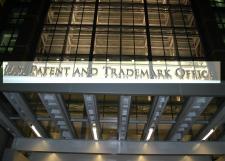 An Office Action (OA) is a formal correspondence from a patent examiner in response to a patent application. An OA typically cites pertinent prior art, and provides reasons why the patent application is allowable or not, in the opinion of the Examiner based on his or her patent analysis. Among other things, an OA details an examiner’s objections and rejections to the claims of a patent application according to the code of patent law for the relevant jurisdiction.
An Office Action (OA) is a formal correspondence from a patent examiner in response to a patent application. An OA typically cites pertinent prior art, and provides reasons why the patent application is allowable or not, in the opinion of the Examiner based on his or her patent analysis. Among other things, an OA details an examiner’s objections and rejections to the claims of a patent application according to the code of patent law for the relevant jurisdiction.
OA responses are the vehicle for addressing an examiner’s remarks, and amending the claims (from the original claims written in the patent-drafting stage) to put them in condition for allowance. Curing claim deficiencies (referred to as “perfecting” the claims) is part of the examination process. In practice, while amending the claims is not mandatory, it is frequently necessary to overcome the cited art in the OA.
The three most important skills that the patent practitioner must exercise when structuring an OA response and ancillary supporting documents are: a complete understanding of the technology area of the invention, a full grasp of the code of patent law in the prosecution jurisdiction, and a meticulous work ethic to achieve a flawless set of interlocking arguments, amendments, and supporting references. While a business orientation in view of the IP strategy is important to the overall prosecution strategy, tactical mistakes in poorly-drafted OA responses will be a more serious downfall in dragging out prosecution, raising legal costs, and jeopardizing IP rights.
A subtle part of the prosecution process is the “tango” between the Applicant and the Examiner through the OAs and OA responses. Many times, the challenge is to ascertain what is the overarching perspective of the Examiner in asserting the objections and rejections in the OA. Moreover, one would like to be able to determine this shortly after receiving the examiner’s “FAOM” (USPTO jargon for “first action on the merits”).
When such “eye-to-eye” understanding is not achievable through written correspondence, it often helps to discuss the matters with the Examiner by telephone. In more complicated cases, an in-person interview with the Examiner and his or her supervisor is a valuable option to avoid wasting time and money in protracted prosecution.
Upon receiving a final-rejection OA, an Applicant generally has two options in the USPTO: to submit a request for continued examination (referred to as an RCE), or to appeal the rejections of the Examiner as detailed in the final OA. In the case of an appeal, the Applicant needs to prove before the USPTO’s Patent Trial and Appeal Board (PTAB) that the Examiner erred in issuing a final-rejection OA.
We have provided further details of the patent appeal process on our site. As a rule of thumb, while OA responses should rely heavily on citing proper patent examination protocols (as stipulated in the Manual of Patent Examining Procedure (MPEP)), appeal arguments asserted in submitted briefs generally draw from the broader body of case law. It is important to note that the discussion above has focused on USPTO prosecution protocol. In other jurisdictions such as the EPO, it is important to employ arguments in OA responses based on the guidelines for examination as well as case law.
FlashPoint IP, a leader among intellectual property firms, factors these wide-ranging aspects into the process of securing patent protection, whether in performing a patent search and patent analysis of the prior art, engaging in patent drafting of applications, selecting how and where to file, or prosecuting your claims to an invention to help you maximize value in an extensive array of practice areas. Our patent attorneys are adept at synthesizing the many facets needed to create a winning formula for your IP. Contact us to discuss your options regarding IP strategy and positioning, and how best to secure your rights.

